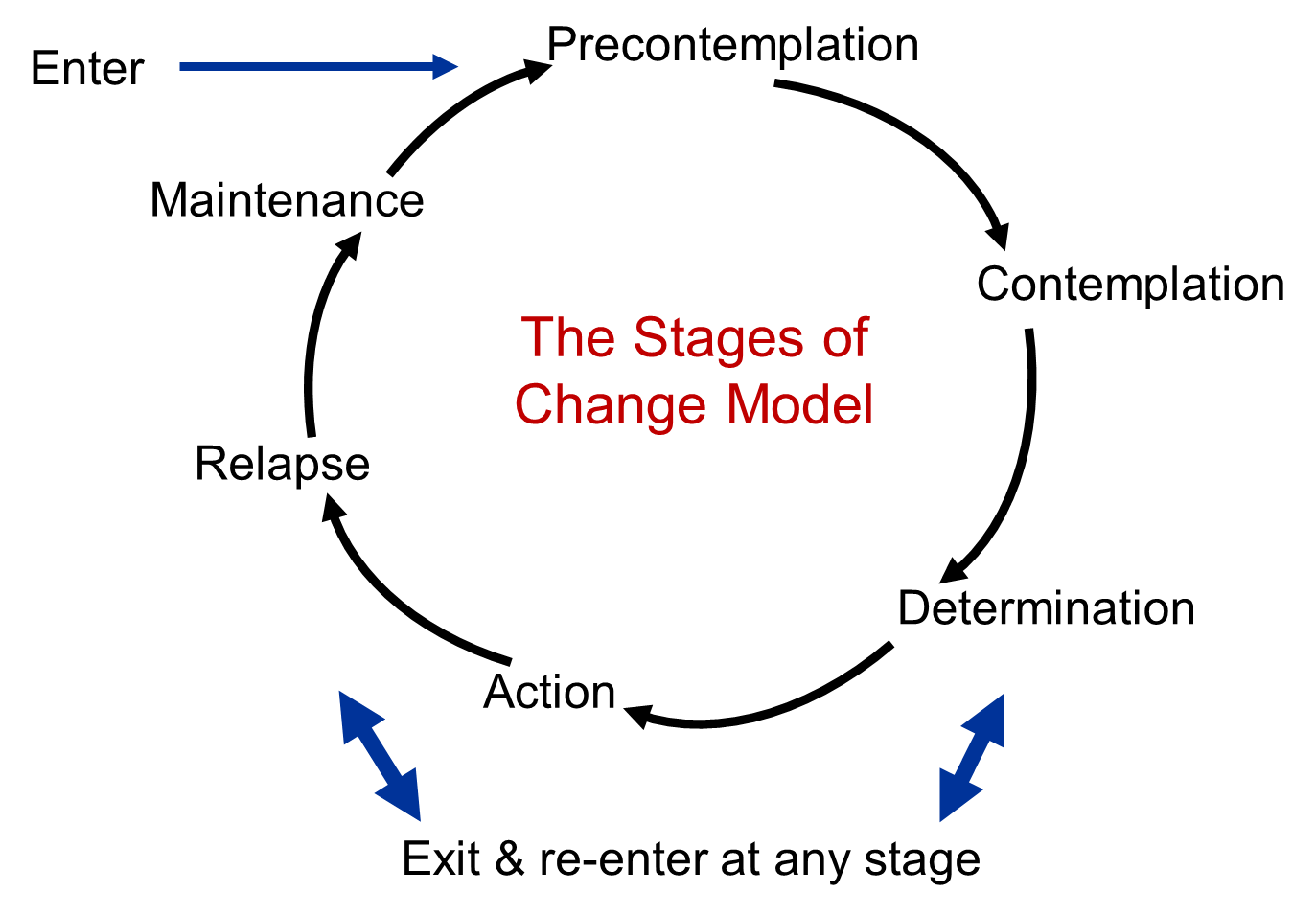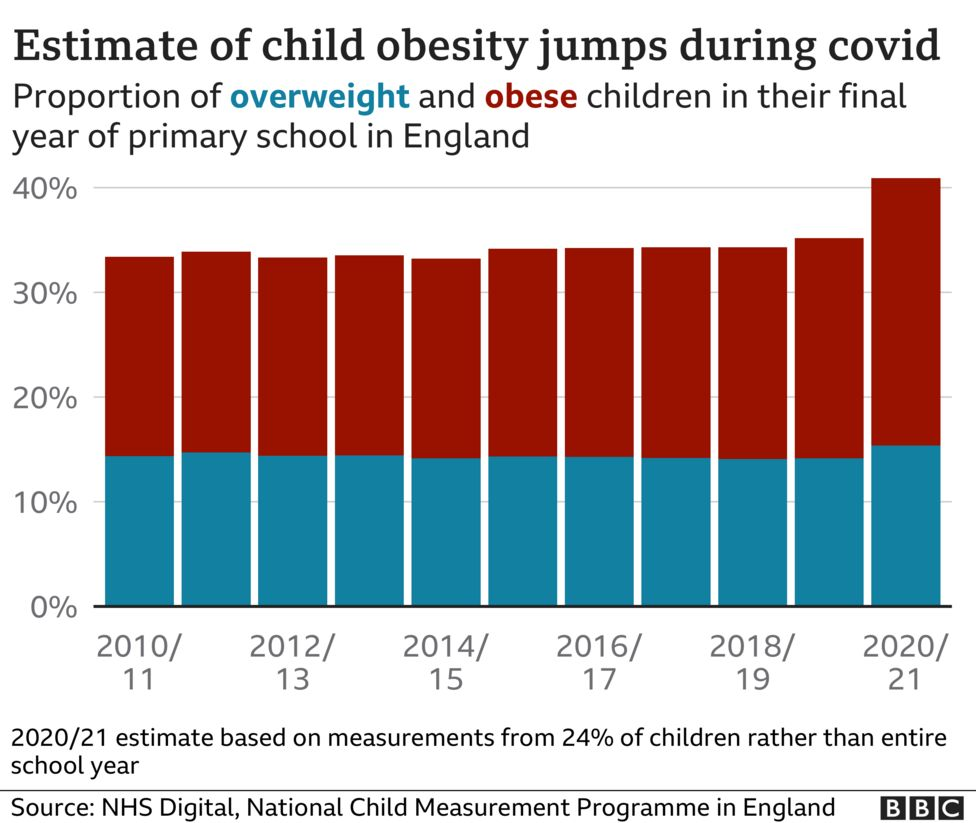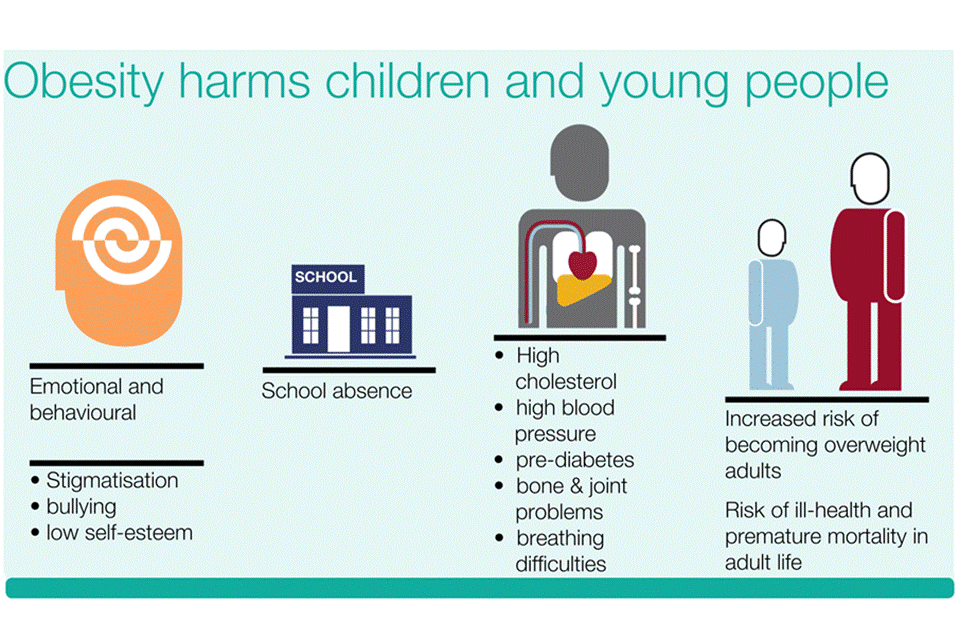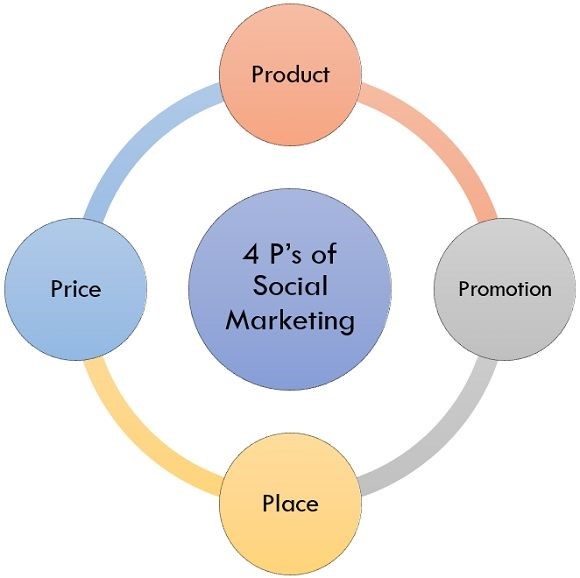AC7027 Public Health Assignment Sample 2
Module code and Title: AC7027 Public Health Assignment Sample 2
Introduction
Social marketing refers to a set of actions that aim to change social behavior. Thus, the purpose of social marketing is to change human behavior in order to bring social change along with improving the lives of people. Unlike commercial marketing, social marketing does not benefit a brand or company, it encourages changes in social behaviors.
The marketing proposal aims to discuss and evaluate the issue of obesity among children through social marketing. Rising obesity rates among children are a significant concern for society as it negatively impacts both the physical and psychological health of children. The children, due to obesity, can face issues of low self-esteem, and anxiety along with serious physical complications such as high blood pressure and diabetes.
The marketing proposal consists of 7 sections in order to illustrate the issues effectively. The first section presents a definition and history of social marketing and its approach to health-related behavior change. Following this, the second section discusses the behavioral change in social marketing. Then, the third section describes the issue of obesity among children.
Following this, the fourth section discusses the management issues associated with the use of social marketing for health. Furthermore, the fifth section presents the incorporation of social marketing planning tools and planning framework. Moreover, the sixth section evaluates the strengths and limitations of utilizing the social marketing approach to health improvement in children.
social marketing and its approach to health-related behavior change
Social marketing is a marketing approach that aims to change people’s behavior that could benefit both individuals and societies. Therefore, the primary purpose of social marketing is to change the perception and behaviors of people. In the early 1970s, Philip Kotler and Gerald Zaltman invented the term “Social Marketing ” as a set of techniques for influencing social behaviors that lead to benefits for societies (BAşAR, 2019). In the initial years, the concepts and principles of social marketing were incorporated in the developing countries in order to bring behavioral changes among the societies on family planning.
When it comes to the implementation of social marketing in developed countries, social marketing was applied in these countries to a smaller extent, especially in the area of a healthy lifestyle. Since the invention of the term “Social Marketing” in the 1970s, it has grown in the areas of safety, protecting the environment, the development of society and community, and public health (Truong, Saunders, and Dong, 2018). Social marketing promotes and encourages the use of environmental-friendly goods in order to reduce pollution and harmful impacts on the environment.
Along with protecting the environment, social marketing encourages health consciousness and a healthy lifestyle among the people of societies. For example, early social marketing campaigns such as anti-tobacco were developed in order to create awareness among the general public, especially among the youth, about the harmful impacts of tobacco on health. It develops awareness regarding social issues such as tobacco’s impacts on health. Thus, social marketing discourages and reduces smoking habits among the general public. Therefore, it leads to a positive impact on individuals and society as a whole.
Behavior change
Behavior changes refer to the certain behaviors of individuals and societies that hinder them from incorporating new positive practices among themselves and societies (Dzerounian et al., 2022). Social marketing leads to the incorporation of new behaviors among society by convincing people about the potential benefits of new behaviors. Thus, the purpose of social marketing is to uplift awareness and change the behaviors of people.
Therefore, in this direction, social marketing presents the consequences of risky behaviors to the target audience. In addition, social marketing also discusses the consequences of risky behaviors on others. However, there are several barriers that prevent individuals from adopting new behaviors. Firstly, fear is considered one of the major barriers to adopting new behaviors.
People don’t initiate the implementation of new behaviors due to the fear of negative consequences. Social marketing aims to incorporate behavioral changes among individuals through several factors such as the benefits of new behaviors that motivate them.
In this context, the Transtheoretical Model has been incorporated in order to illustrate the stages of behavioral changes. The Transtheoretical Model has 6 stages: pre-contemplation, contemplation, preparation, action, maintenance, and termination (Michels, von Hobe and Musshoff, 2020). For each of these stages, different techniques of intervention have been applied.
- Precontemplation: In this stage, children and their parents are ignoring the negative consequences of obesity among themselves. Thus, they do not initiate any actions for changing their behaviors.
- Contemplation: In this stage, the children and their parents will start to put in action in order to change their behaviors. Therefore, the children and their parents will recognize the harmful impacts of obesity on health and will work toward changing their behavior.
- Preparation: In this stage, the children will initiate to take action within the next 30 days. They will start taking micro steps for changing their behaviors and adopting a healthy lifestyle.
- Action: In this stage, children and parents will keep moving forward with their new behaviors as well as adopting new healthy behaviors.
- Maintenance: In this stage, the children will sustain their behaviors and will also be determined to maintain their behaviors in the future.
- Termination: In this stage, the children will have no desire to return to their old unhealthy behaviors. In addition, the children will identify the triggers that lead to relapse in the old behavior.
Therefore, based on the evaluation of the behavioral change model, it can be stated that the major barrier to the successful implementation of anti-obesity smoking is the unwillingness of the parents and children to initiate action for mitigating the obesity issue. Therefore, the anti-obesity campaign will present the data published by NHS for communicating with the parental families regarding the harmful impacts of obesity.
 Figure 1: Transtheoretical Model of behavioral change (Source: Michels, von Hobe and Musshoff, 2020)
Figure 1: Transtheoretical Model of behavioral change (Source: Michels, von Hobe and Musshoff, 2020)
The issue- obesity among children
Obesity among children is considered a significant health issue for both the children and their families. Obesity leads to harmful impacts on children that affect both their physical and emotional health. Obesity can increase the chance of lifestyle diseases such as high blood pressure, diabetes, and high cholesterol among children.
In addition to increasing the chance of physical health risks, obesity can also lead to behavioral and emotional changes among children as they can face the issues of bullying, low self-esteem, anxiety, and stigmatization (Brown et al., 2019). As per the report of the National Child Measurement Program, England published by NHS Digital, the cases of obesity among four and five-year-old increased by 9.9% and 14.4 % in the year 2019 and 2020 respectively (bbc.com, 2022).
 Figure 2: Rising obesity among children in England (Source: bbc.com, 2022)
Figure 2: Rising obesity among children in England (Source: bbc.com, 2022)
As per the report of the National Child Measurement Program, the prevalence of Obesity was more among the children residing in the most deprived areas as compared to the children resigning in the least deprived areas. In addition, the prevalence of obesity was more in boys as compared to girls. In the year 2019, 20% of girls and 27% of boys fell under the obesity category (statista.com, 2022).
Along with this, the prevalence of obesity was identified in 15% of boys and 8% of girls in the two-ten-year age group. During the pandemic, the rates of obesity among children have witnessed a significant rise in England. As per the data of NHS digital, 10% children of in primary school were classified as obese, however, that number jumped during the period of 2020-21 to more than 14%.
When it comes to the root causes of obesity, there are multiple factors behind the rise in obesity. Firstly, lack of exercise is a prime risk factor behind becoming overweight. Secondly, consumption of high-calorie foods especially junk foods, cause children to gain unhealthy weight (Alshihri et al., 2019). Thirdly, psychological factors such as stratus and anxiety can increase the risk of obesity among children.
during the time of dress or anxiety, several children overeat to deal with negative emotions, causing them to gain weight. Lastly, certain prescribed drugs can increase the chances of developing obesity. Therefore, t can be understood that obesity is a major concern for both society and children as it damages their physical and emotional health. Therefore, this social marketing proposal aims to develop several activities that can bring more awareness to children and parents regarding the harmful impacts of obesity and how it can be prevented.
 Figure 3: Impact of obesity on health (Source: (Alshihri et al., 2019)
Figure 3: Impact of obesity on health (Source: (Alshihri et al., 2019)
Management issues associated with the use of social marketing for health.
Management
Management is one of the crucial aspects of social marketing as it involves the systematic implementation of marketing activities and techniques in order to push for behavioral changes among the target audience that is beneficial for society (Bukanov et al., 2019). Social marketing has several stages such as planning the social marketing strategies, developing channels for communicating with the target audience, developing materials, incorporating, evaluating the effectiveness, and obtaining feedback.
Therefore, in the first stage of designing strategies, the marketing manager should write the problem statements about the rising cases of obesity among Children across the UK. In addition, the social marketing campaign will list the causes of obesity such as heavy intake of junk foods, lack of exercise, and stress. Furthermore, the social marketing campaign will identify the potential audiences. In this context, it can be stated that the potential audience will be the parental families across the UK. Along with this, the social marketing campaign will incorporate the key concepts of behavior changes using the behavioral change model.
Total Process Framework
Total Process Framework is utilized for illustrating the planning and development of the anti-obesity campaigns. The TTP consists of 5 stages: Scope, design, implementation, evaluation, and follow-up (Flaherty, Domegan and Anand, 2021).
Scope
The very first step in this anti-obesity campaign will be presenting the negative impacts of obesity on children’s health. Anti-obesity will be promoted across the UK; thus, the anti-obesity campaign will include staff training, budgetary and expenditure control, planning, designing, and implementation. Therefore, in this stage, the key activities will be segmenting the target audience, identifying the barriers to adopting the new behaviors, and identifying the motivational factors that could support the behavioral changes (Duane and Domegan, 2019). Following this, the anti-obesity campaign will pinpoint the causes and solutions regarding the existing issue to the target audience.
- Segmenting target audience: Segmenting audience refers to dividing the target audience into subgroups (Kitunen et al., 2019). The obesity rate is rising at a fast pace among the children of the UK. Therefore, the parental families will be selected as the target audience for this anti-obesity campaign. In this direction, the qualitative data will be used for assessing the lifestyle choices and living standards of UK parental families. Furthermore, secondary data regarding the lower class, middle classroom, and upper-middle class families will be collected in order to segment the target audience. The segmentation of the target audience will be based on 4 key factors: Geographic, Demographic, Behavioral, and psychological.
Geographic: the UK will be selected as the geographic location for the anti-obesity campaigns. As per the report of the NHS, obesity has risen to more than 14.4 % of children across the UK. Therefore, anti-obesity will target all major this of the UK. Demographic: Parental families, in the lower and middle-income category, will be chosen as NHS Digital revealed that children living in the most deprived areas are most likely to develop obesity problems. Therefore, the anti-obesity campaign will primally target the parental families of low-income groups in the UK.
Psychological: Families with unhealthy lifestyle practices will be chosen for this anti-obesity campaign. Due to the prevalence of unhealthy lifestyle practices, children, over the course of time, gained unhealthy weight which increases the chance of lifestyle diseases. Therefore, the anti-obesity campaign will target families, with poor lifestyles, for adopting new behavioral changes. Behavioral: Families with resistance to change to new behaviors will be chosen as the target audience for this anti-obesity campaign.
- Identifying the barriers to adopting new behaviors: The lack of immediate consequences of adopting new behaviors can be considered a major barrier to the social marketing campaign (Lee and Kotler, 2019). Therefore, lack of immediate desired results could be a major barrier in implementing anti-obesity campaign. In addition, the lack of a supportive environment for children can also be considered a barrier to implementing anti-obesity campaigns successfully.
- Identifying motivation factors: The positive impacts such as decreasing the chances of developing lifestyle diseases after adopting new behaviors can be presented to motivate the parental families into adopting new behaviors (Knittle et al., 2018). Therefore, the motivation factors in the incorporation of anti-obesity campaign will be the improved health, decreased chances of developing lifestyle diseases.
Therefore, it can be stated that the new anti-obesity campaign will target parietal families, in the lower and middle-class categories, across the UK. In addition, the campaign will target those families that are resistant to implementing new behaviors.
Designing
In order to illustrate the planning and application of social marketing practices for the issue of obesity among children, a 4Ps Marketing mix has been incorporated into this marketing proposal. 4Ps Marketing Mix consists of 4 elements: Product, place, promotion and price (Lahtinen, Dietrich and Rundle-Thiele, 2020).
- Product: The desired behavior is considered a product in social marketing (Sauvage-Mar et al., 2019). Thus, in this instance, an anti-obesity campaign will be considered as the product. The anti-obesity campaign could prevent the negative impact of obesity on children’s physical and emotional health. Furthermore, these negative impacts could be utilized for showing the urgency of adopting good behaviors that counter obesity.
- Price: The social benefits that the children will earn can be considered as the price in social marketing (Veríssimo, 2020). Thus, the anti-obesity social marketing campaign will need to ensure that the benefits of adopting new behaviors outweigh the old behaviors by presenting statistics regarding the harmful impacts of obesity. Thus, it will help the target audience understand the benefits of new behaviors.
- Place: Place refers to where the planned actions will be performed (Akbar, French and Lawson, 2019). The proposed interventional program will take place in schools and local community venues across the UK. The social marketing campaign will be performed during the morning hours as it will be suitable for the target audience. The anti-obesity campaigns will present the harmful impacts of obscurity on health. In addition, the anti-obesity campaigns will also describe the preventive factors that could reduce the chance of developing obesity among children.
- Promotion: Promotion refers to the activities through which social marketing campaigns are promoted (Kaveh et al., 2021). The anti-obesity campaign will be promoted through Television advertising and social marketing advertising. Television advertising and social marketing advertising will help in engaging the target audience on a large scale with the campaign and presenting the benefits of adopting new behaviors. Furthermore, feedback will be obtained from the parental families across the UK that can help in implementing the campaign successfully.
The anti-obesity will be described to raise awareness regarding the existing problem of rising obesity in children. In addition, the anti-obesity campaign will present the root causes of obesity and how it can be mitigated with the help of preventive factors such as doing exercise regularly, healthy intake of food, and practicing mindfulness.
 Figure 4: 4Ps of Marketing Mix (Source: (Lahtinen, Dietrich and Rundle-Thiele, 2020)
Figure 4: 4Ps of Marketing Mix (Source: (Lahtinen, Dietrich and Rundle-Thiele, 2020)
Implementation
In order to implement the new behaviors successfully, the teachers will be involved in describing the potentially harmful impacts of obesity among children. Successful Implementation helps in obtaining desired behavioral changes among the target audience (Campbell and Brauer, 2020). This will also help in lowering the resistance to adapting to new behaviors of the parental families. Therefore, the stage will include the training of teachers in presenting the negative consequences of the older behaviors as well as the positive impacts of the new behavior.
Evaluate
The evaluation stage the strengths and limitations of social marketing campaigns is evaluated in order to determine the impact on the new behaviors and parents in the target audience (Wang et al., 2020). In addition, the major barriers such as the lack of immediate consequences of the new behaviors in incorporating new anti-obesity campaigns will be evaluated. In addition, the barriers regarding the implementation such as the unwillingness of parents to take part in the campaign will be evaluated.
Follow up
In the follow-up stage, feedback from parenteral families will be taken in order to obtain significant insights regarding the successful implementation of the anti-obesity campaign. However, this Stage also forwards the path for future intervention in the obesity health issue.
Developing channels for communicating
Communication channels are considered a crucial component of social marketing campaigns for communicating with the target audience (Çalışkan and İzmirli, 2020.) The anti-obesity campaign will be promoted through television advertising across the UK. In addition, the campaigners will establish face-to-face interactions with the parental families for discussing the negative consequences of obesity. In addition, the anti-obesity campaign will be prompted through social marketing advertising in order to raise awareness among the people regarding the negative impacts of obesity on the health of children.
The strength and limitations of utilizing social marketing as an approach to health improvement.
The strengths and limitations of social marketing are key factors that decide its effectiveness of social marketing. Therefore, the anti-obesity campaigns also consist of several strengths and limitations. When it comes to weaknesses, behavioral changes require a longer time to present positive impacts (Andreasen, 2018). Thus, it is nearly impossible to witness the immediate positive benefits of new behavior. Therefore, in this direction, social marketing campaigns may fail to attract the target audience. In addition, it also can cause poor engagement with the target audience.
Therefore, the anti-obesity campaigns may face the drawback of not being able to attract enough audience. Following this, when it comes to strengths, cost-effectiveness can be considered a major strength as the social marketing campaign requires lower costs to promote (Goldberg, Fishbein and Middlestadt, 2018). The scale of intervention can also be considered a major limitation because anti-obesity smoking is aimed at the individual level. The anti-obesity campaign may fail because the effort and resources of individuals may not be adequate to witness desired behaviors.
Conclusion
Rising obesity among the children of the UK is a major concern for parental families as it causes harmful impacts on the physical and emotional health of children. Based on the reports of the NHS, obesity has risen at a fast pace in the children of the UK, especially during the Covid-19 pandemic. Therefore, the marketing proposal aimed to lead to behavioral changes in the children and their parents. Based on the evaluation of the behavioral change model, it can be stated that there are principally 6 stages of behavioral changes and among the stages, the 1st can be considered as most important for these anti-obesity campaigns.
Following this, the target audience for the anti-obesity campaign will be the parental families of lower and middle-class categories. In addition, the anti-obesity campaigns will be performed in schools and community venues across the UK. However, it was also observed that the social marketing campaigns also have several drawbacks such as the requirement of a long time for people to have positive impacts on new behaviors. Therefore, it can be concluded that the anti-obesity campaign can witness the positive consequences of new behaviors over a long-time duration.
Reference list
Akbar, M.B., French, J. and Lawson, A., 2019. Critical review on social marketing planning approaches. Social Business, 9(4), pp.361-393.
Alshihri, A.A., Rogers, H.J., Alqahtani, M.A. and Aldossary, M.S., 2019. Association between dental caries and obesity in children and young people: a narrative review. International Journal of Dentistry, 2019.
Andreasen, A.R., 2018. Challenges for the science and practice of social marketing. In Social Marketing (pp. 3-19). Psychology Press.
BAşAR, E.E., 2019. THE SOCIAL MARKETING. Selected Studies on Social Sciences, p.120.
bbc.com, 2022. Pandemic sees big rise in obese children in England. [online] BBC News. Available at: <https://www.bbc.com/news/health-59308878> [Accessed 2 August 2022].
Brown, T., Moore, T.H., Hooper, L., Gao, Y., Zayegh, A., Ijaz, S., Elwenspoek, M., Foxen, S.C., Magee, L., O’Malley, C. and Waters, E., 2019. Interventions for preventing obesity in children. Cochrane Database of Systematic Reviews, (7).
Bukanov, H., Kolesnyk, A., Tashkinova, O., Kotlubai, V. and Koval, V., 2019. Social marketing in public administration of social service institutions. Revista Genero & Direito, 8(6), pp.457-468.
Çalışkan, G. and İzmirli, Ö.Ş., 2020. Teachers’ communication channels in the innovation-decision process. Egitim ve Bilim, 45(203).
Campbell, M.R. and Brauer, M., 2020. Social marketing campaigns to address social problems. The Routledge research encyclopedia of psychology applied to everyday life, pp.608-629.
Duane, S. and Domegan, C., 2019. Social marketing partnerships: Evolution, scope and substance. Marketing Theory, 19(2), pp.169-193.
Dzerounian, J., Pirrie, M., AlShenaiber, L., Angeles, R., Marzanek, F. and Agarwal, G., 2022. Health knowledge and self-efficacy to make health behaviour changes: a survey of older adults living in Ontario social housing. BMC geriatrics, 22(1), pp.1-17.
Flaherty, T., Domegan, C. and Anand, M., 2021. The use of digital technologies in social marketing: a systematic review. Journal of Social Marketing.
Goldberg, M.E., Fishbein, M. and Middlestadt, S.E. eds., 2018. Social marketing: Theoretical and practical perspectives. Psychology Press.
Kaveh, M.H., Layeghiasl, M., Nazari, M., Ghahremani, L. and Karimi, M., 2021. What Are the Determinants of a Workplace Health Promotion? Application of a Social Marketing Model in Identifying Determinants of Physical Activity in the Workplace (a Qualitative Study). Frontiers in Public Health, 8, p.614631.
Kitunen, A., Rundle-Thiele, S., Kadir, M., Badejo, A., Zdanowicz, G. and Price, M., 2019. Learning what our target audiences think and do: Extending segmentation to all four bases. BMC Public Health, 19(1), pp.1-10.
Knittle, K., Nurmi, J., Crutzen, R., Hankonen, N., Beattie, M. and Dombrowski, S.U., 2018. How can interventions increase motivation for physical activity? A systematic review and meta-analysis. Health psychology review, 12(3), pp.211-230.
Lahtinen, V., Dietrich, T. and Rundle-Thiele, S., 2020. Long live the marketing mix. Testing the effectiveness of the commercial marketing mix in a social marketing context. Journal of Social Marketing.
Lee, N.R. and Kotler, P., 2019. Social marketing: Behavior change for social good. Sage Publications.
Michels, M., von Hobe, C.F. and Musshoff, O., 2020. A trans-theoretical model for the adoption of drones by large-scale German farmers. Journal of Rural Studies, 75, pp.80-88.
Sauvage-Mar, C., Naylor, P.J., Higgins, J.W. and VonBuchholz, H., 2019. Way2Go! Social marketing for girls’ active transportation to school. Preventive medicine reports, 14, p.100828.
statista.com, 2022. England: overweight prevalence among children 2019 | Statista. [online] Statista. Available at: <https://www.statista.com/statistics/375726/children-overweight-and-obesity-prevalence-by-gender-and-age-in-england/> [Accessed 2 August 2022].
Truong, V.D., Saunders, S.G. and Dong, X.D., 2018. Systems social marketing: A critical appraisal. Journal of Social Marketing.
Veríssimo, D., 2020. Taking the pulse of social marketing: The 2019 world social marketing conference. Social Marketing Quarterly, 26(4), pp.271-275.
Wang, Y., Wang, Y., Greene, B. and Sun, L., 2020. An analysis and evaluation of quality and behavioral change techniques among physical activity apps in China. International Journal of Medical Informatics, 133, p.104029.
Know more about UniqueSubmission’s other writing services:

